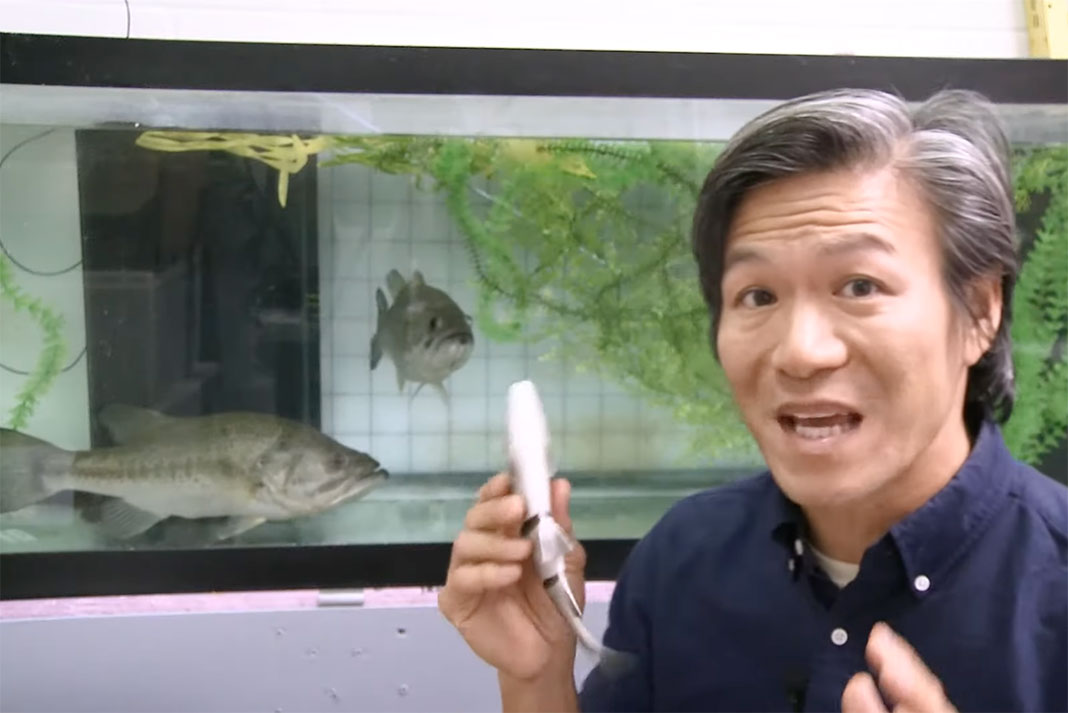To hook up with a fish you need to spark the urge to feed, and swimbaits work by mimicking the motion of a swimming baitfish. But just how well do they do it? Dr. James Liao is the host and head investigator of Fish Code Studios. He uses fish biomechanics to explore how many segments you need for a realistic swimbait. Anglers, the answer might surprise you.
How to Build a Realistic Swimbait
The field of biomechanics “measures precisely the motions of how animals move,” Liao explains by way of introduction. “Scientists do this because nature’s inspirations are often far better than anything we can engineer or design ourselves.” As an associate professor of biology at the University of Florida’s Whitney Lab for Marine Bioscience, Liao’s speciality is fish.

In this study, he and his lab-mates captured video footage of swimming minnows and swimbaits, then compared the two using computer analysis. What does their research have to say about your favorite bait?
A one-segment swimbait only achieves five-percent accuracy when compared to a real fish, according to Liao, but with two segments the accuracy rises to 60 percent. Five segments gets you all the way to 90-percent accuracy, but beyond a certain point there are diminishing returns. The reason is that “some parts of the fish aren’t that flexible,” says Liao.
Naturally, It’s Not That Simple
Three to five segments are great when it comes to making a swimming motion, but Liao cautions that you may need a different number to mimic other movements. “So, glidebaits for example, they can have one or two segments and turn just fine,” he explains, “but if you retrieve it steadily it’s just not going to mimic a real fish swimming.” One more reason to choose wisely and work on your cast-and-retrieve.
Find more information on fish biomechanics and Dr. James Liao’s work at liaolab.com.

